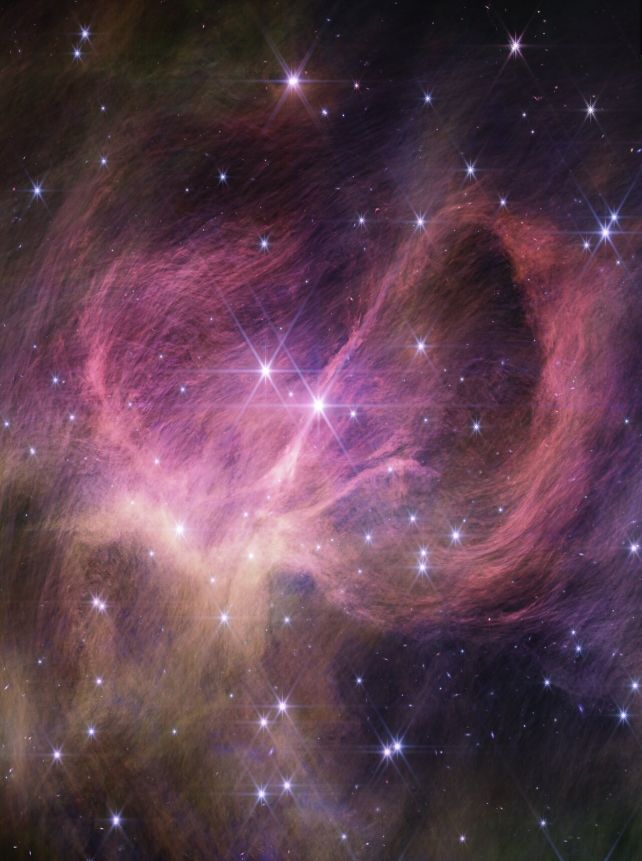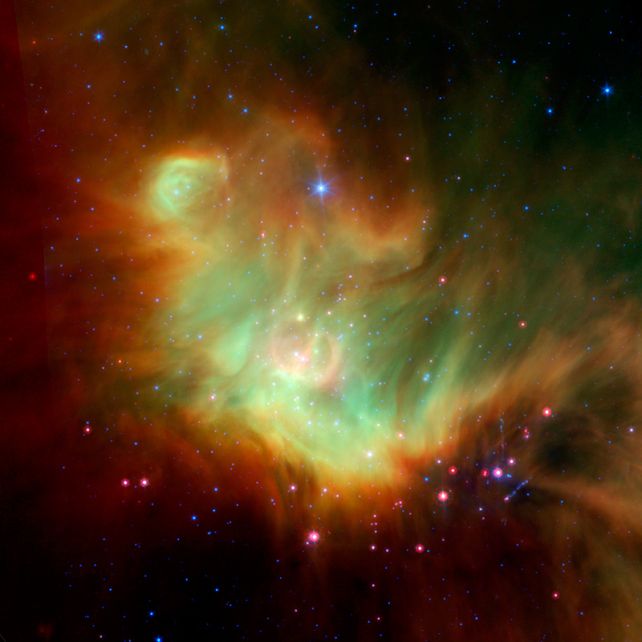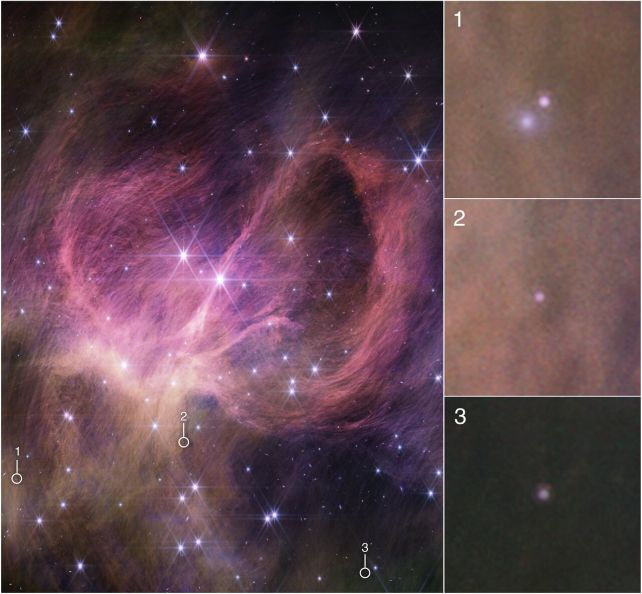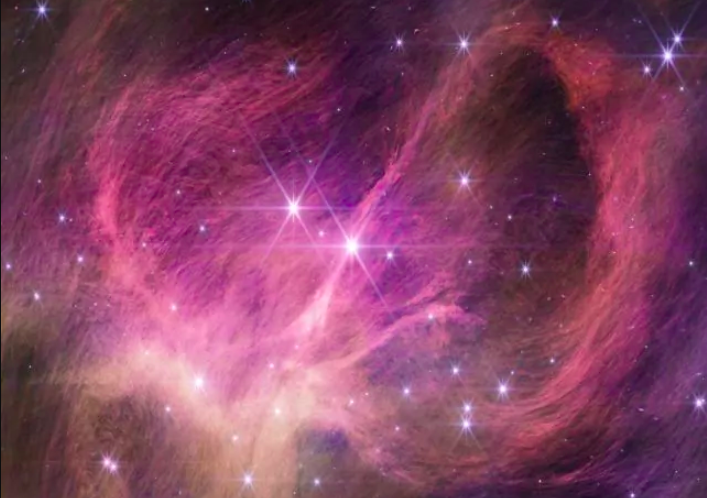JWST Unveils Unprecedentedly Tiny Brown Dwarf Defying Current Understanding
A recently found extraordinary entity is challenging our comprehension of stellar formation.
This lone brown dwarf, discovered adrift in space, poses a unique puzzle. With a mass merely 3 to 4 times that of Jupiter, it seems to be the smallest object of its type ever detected. This discovery sparks intriguing quandaries, notably concerning its improbable formation.
“Around a star, current models easily generate colossal planets in a disk,” explains astronomer Catarina Alves de Oliveira from the European Space Agency. “However, in this cluster, it’s improbable that this object formed within a disk. Instead, it likely formed like a star. Yet, at three Jupiter masses, it is 300 times smaller than our Sun. Hence, we must inquire: How does the star formation process function at such remarkably diminutive masses?”

Brown dwarfs, often dubbed as “failed stars” (a somewhat harsh term, yet not entirely inaccurate), arise from a similar birth process to stars. Stars originate from condensed regions within gas and dust clouds in space that collapse due to gravitational forces. They steadily amass mass until reaching a point where the pressure and temperature at their core ignite hydrogen fusion—a threshold typically around 80 to 85 times the mass of Jupiter.
However, brown dwarfs, while formed through a comparable process, fail to accumulate enough mass to trigger hydrogen fusion. Notably, they aren’t classified as planets either. Their designation “brown” is indicative of their size, being smaller than white dwarf stars yet larger than non-radiating ‘dark’ planets.
At a specific critical mass, approximately 13 times that of Jupiter, a brown dwarf can facilitate the fusion of atoms—though not hydrogen, but rather the heavier isotope deuterium, which requires lower fusion pressures and temperatures than hydrogen.
Planets, on the other hand, form via a distinct process involving the gradual accumulation of residual material post-star formation. Hence, an entity stemming from gravitational collapse but lacking the mass for fusion ignition could still potentially evolve into a brown dwarf. Astronomers sometimes refer to these objects that take the planetary formation route as sub-brown dwarfs, planetary-mass brown dwarfs, or rogue planets.

Kevin Luhman from Pennsylvania State University leads a team of astronomers on a quest to identify the tiniest celestial entities.
“In every astronomy textbook, a fundamental inquiry arises—what constitutes the smallest stars?” Luhman explains. “That’s the puzzle we’re aiming to unravel.”
Their investigation utilized the James Webb Space Telescope to scrutinize the core of IC 348, a youthful star cluster nestled within the Perseus star-forming region, situated approximately 1,000 light-years distant. Sub-brown dwarfs, being notably cool and faint in comparison to stars, necessitate an infrared instrument like the JWST for detection. The astronomers initially employed the near-infrared NIRCam to seek potential candidates and then employed NIRSpec, the spectrograph, for further analysis.
Their exploration unveiled three fresh members within IC 348 that fit the criteria, exhibiting masses ranging between three and eight Jupiters and registering temperatures spanning 1100 to 1800 Kelvin (equivalent to 827 to 1527 degrees Celsius or 1520 to 2780 Fahrenheit). Among these candidates, the smallest marks a new record with a mass approximately around three to four Jupiters.
This discovery poses a genuine conundrum. In the context of star formation, a cloud possesses considerable mass and consequently exerts substantial gravitational forces. The researchers highlight that generating an object resembling a planet would originate from a smaller cloud, thereby possessing reduced gravitational pull—a circumstance that renders the formation process considerably more challenging.

The potential scenario that these entities might be exoplanets expelled from their planetary systems exists but remains improbable. Despite their considerable size in the planetary context, most stars within IC 348 are remarkably diminutive. The formation of sizable planets encircling such small stars presents a perplexing challenge. Adding to this quandary, the cluster’s youthfulness suggests insufficient time for planets to originate and drift so far from their systems, as per the researchers.
However, that’s not the sole enigma. The spectroscopic analysis uncovered an unidentified hydrocarbon in two of these entities. This particular chemical signature has been observed in the atmospheres of Saturn and Titan within our Solar System, as well as in interstellar space, yet its presence in an extrasolar atmosphere marks a pioneering observation.
Hence, whatever we are observing here introduces novel and captivating aspects to contemplate, shedding light on the intriguing nexus between stars and planets.
“This marks the premier detection of this molecule within the atmosphere of an object beyond our Solar System,” remarks Alves de Oliveira. “Existing models for brown dwarf atmospheres do not anticipate its existence. Our scrutiny delves into entities characterized by younger ages and lesser masses than previously observed, unveiling an unforeseen and groundbreaking revelation.”
The research has been published in The Astronomical Journal.
Do not forget to share your opinion with us to provide you with the best posts !




0 Comments